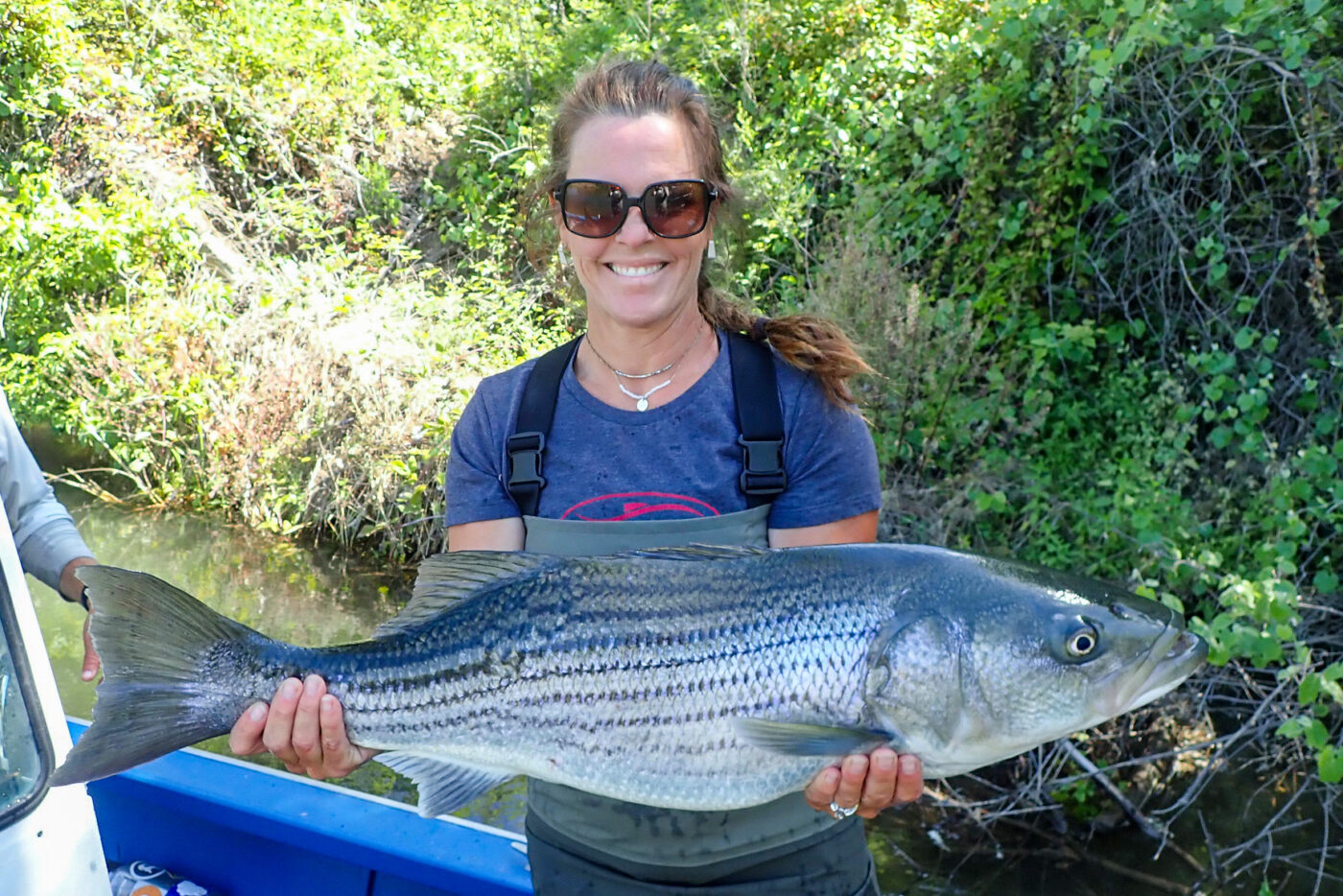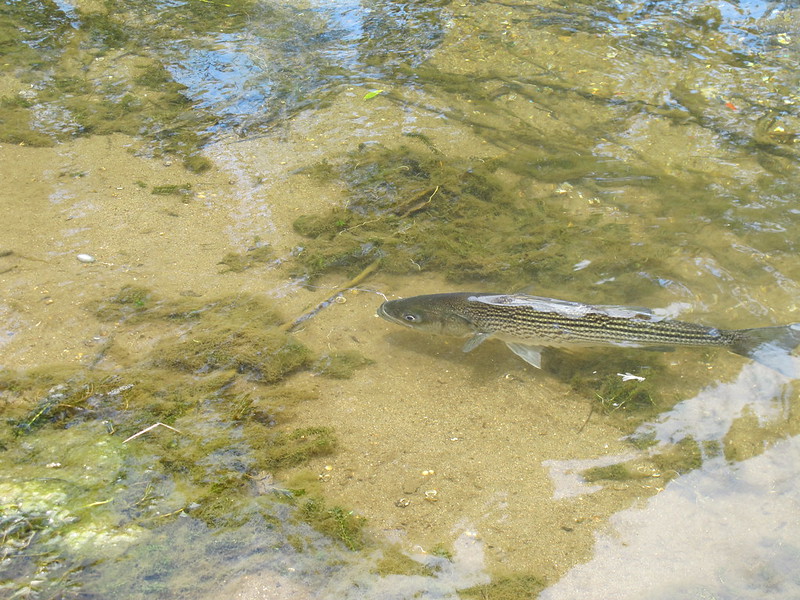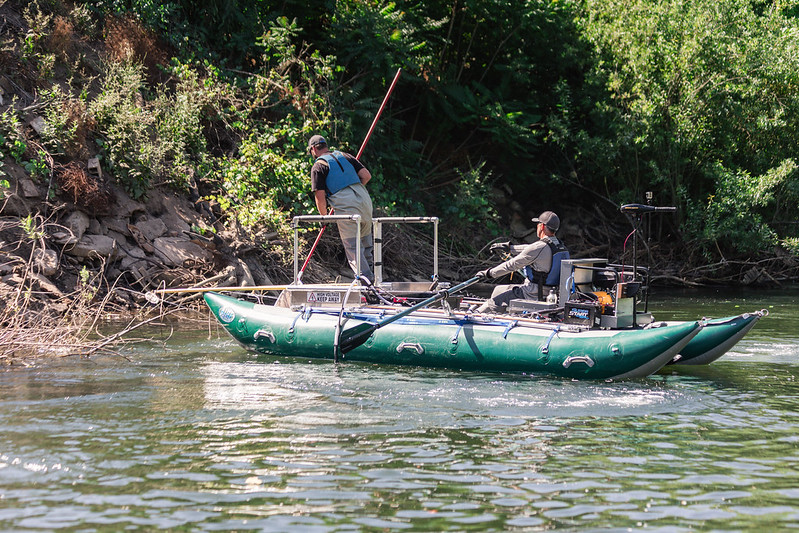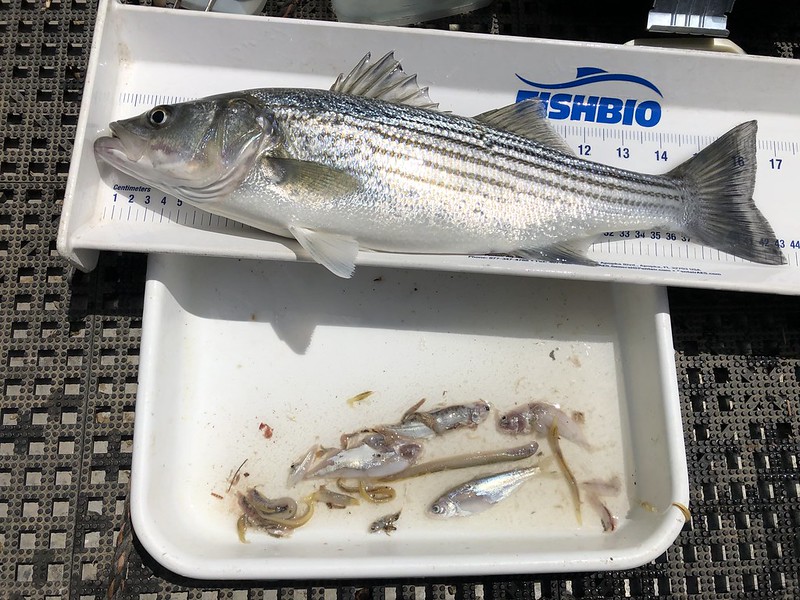Monday September 23, 2024

Striped bass (Morone saxatilis) are arguably one of the most popular sport fish in California’s Central Valley and the San Francisco Estuary. Any angler who has ever had a whopper (a technical term referring to a large fish) on the end of their line would understand why. Striped bass can grow quite large (over 50 cm/20 inches) and they fight hard. Since their introduction in the late 1800’s, they have become an important fisheries resource in California, so much so that they were the impetus for the start of the longest running Delta fish monitoring programs. Although fisheries biologists have been monitoring juvenile and adult striped bass in the Sacramento-San Joaquin Delta and Sacramento River for decades, very little monitoring occurred in the San Joaquin River and its tributaries. Therefore striped bass in the San Joaquin Basin have remained relatively mysterious. However, a quick search on Youtube for “striped bass” and “Stanislaus River” returns a number of videos showing anglers catching whopper stripers. Researchers from FISHBIO sought to learn more about when and where striped bass occur in the Stanislaus River. In a recently published article, Ware et al. (2024) leveraged data from multiple long-term salmonid monitoring programs as well as data from a research program focused on striped bass and black bass species, to gain valuable insight into the presence of stripers in the system, information that has important implications for juvenile Chinook salmon (Oncorhynchus tschawytscha) and other native fish.

The Stanislaus River has some of the longest running monitoring programs for fall-run Chinook salmon and steelhead (O. mykiss), using methods such as rotary screw traps, a fish counting weir, and snorkel surveys at different times through the year. FISHBIO researchers sifted through long-term datasets from these programs to look for incidental records of striped bass. The compiled data showed that striped bass had been observed in every month of the year, suggesting they maintain a continuous presence in the Stanislaus River. However, because these programs were not designed to target striped bass, there was no way to tell how broadly they were distributed in the river at different times of the year or what sizes of striped bass were present.

For a more rigorous analysis of when and where striped bass occurred in the Stanislaus, the researchers used catch data from standardized electrofishing surveys specifically targeting striped bass in the lower river from February to June in 2019, 2020, and 2021. In most years, the number of striped bass captured per hour of electrofishing increased from February to June, indicating that striped bass were migrating into the Stanislaus River over these months. In addition, striped bass captured in February and March were nearly always greater than 30 cm (12 in) in length, and smaller striped bass did not arrive until April. Next, the researchers performed analyses to model striped bass occupancy throughout the lower river in each year. In all three years, estimates of occupancy generated by the models indicated that striped bass were present in over 80% of the lower Stanislaus River by the end of May. Over the three years included in the study, the river experienced very different flow conditions, with 2019 being a wet year, 2020 being a dry year, and 2021 being a critically dry year. This indicated that striped bass were using the Stanislaus River in the spring regardless of how much flow there was in the river.

While there is still much work to be done to fully understand striped bass life histories and size-specific movement behaviors in California, this study represents an important first step towards unraveling the complex ecology and seasonal distribution of this adaptable species. The same properties that make striped bass a popular sport fish (large body, powerful swimmer, and a voracious appetite), also make them an efficient predator and threat to important, sensitive native fish species. The Stanislaus River is still a significant source of naturally produced fall-run Chinook salmon, steelhead, and rainbow trout. Juvenile salmon migrate through the lower Stanislaus River from January to June and were a frequent snack for all sizes of striped bass encountered during the study. Knowing that striped bass and salmon overlap in space and time can help inform management strategies that seek to minimize the impacts of a popular non-native sport fish on equally popular and culturally important native salmon.
Header Image: Large striped bass captured on the Stanislaus River.
This post was featured in our weekly e-newsletter, the Fish Report. You can subscribe to the Fish Report here.
